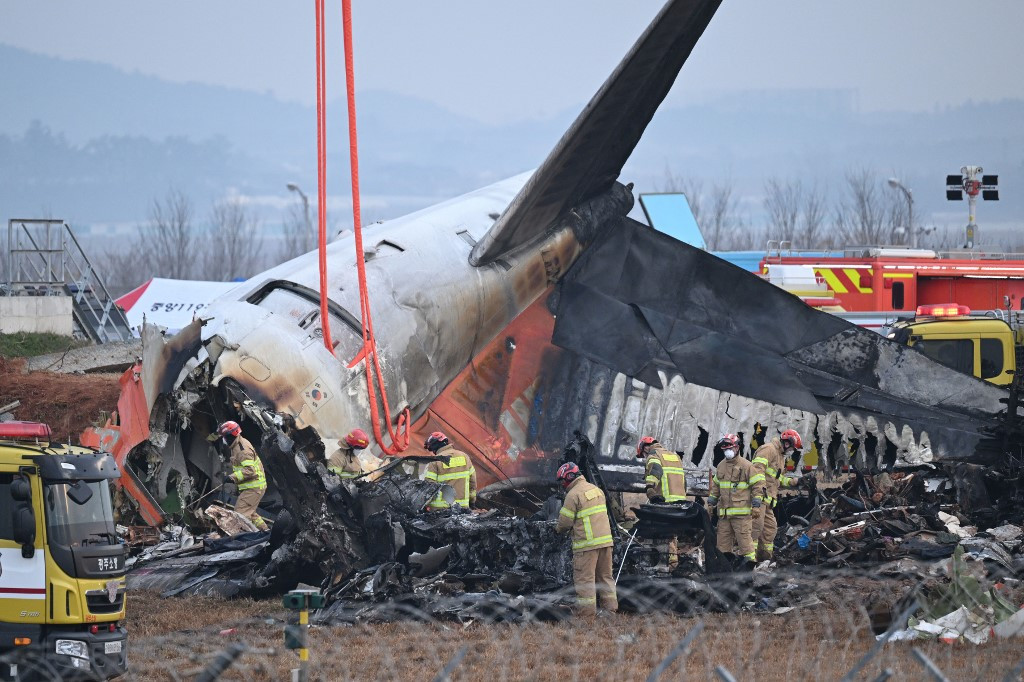South Korea is grappling with its worst air disaster following the crash of Jeju Air Flight 7C2216 on December 29, which claimed 179 lives. The Boeing 737-800 jet went down at Muan International Airport during a failed emergency landing, triggering a full-scale investigation by transport authorities.
A detailed timeline from preliminary reports, cockpit and flight data recorders, and a recent July 19 update sheds light on the aircraft’s final moments. The jet, en route to Muan, made contact with air traffic control at 8:54 a.m. and was cleared to land on runway 01. But within minutes, at 8:57 a.m., a caution about bird activity was issued.
At 8:58:11 a.m., pilots confirmed visual contact with a flock of birds. Just 15 seconds later, the aircraft aborted landing and initiated a go-around—standard aviation procedure. However, it collided with birds during this maneuver, resulting in engine vibrations. The right engine emitted flames and black smoke after surging.
Critically, by 8:58:45 a.m., the pilots shut down the left engine in response to the emergency, as confirmed by data from the cockpit voice and flight recorders. Five seconds later, both recorders stopped functioning while the plane was still airborne at 498 feet and 161 knots.
At 8:58:56 a.m., the pilot issued a Mayday call, citing bird strikes. The flight requested to land from the opposite direction on runway 19, receiving clearance at 9:01 a.m. One minute later, the plane touched down belly-first without deploying its landing gear, skidding along the runway.
Seconds later, it overshot the runway and crashed into an embankment at 9:02:57 a.m. Emergency responders were activated immediately. The first survivor was rescued at 9:23 a.m., followed by a second at 9:50 a.m. Muan Airport was closed at 9:38 a.m.
Investigations are ongoing, with attention focused on bird strike protocols, emergency procedures, and mechanical response. The tragedy has sent shockwaves across the nation, raising urgent questions about air safety standards and wildlife hazard mitigation at airports.

